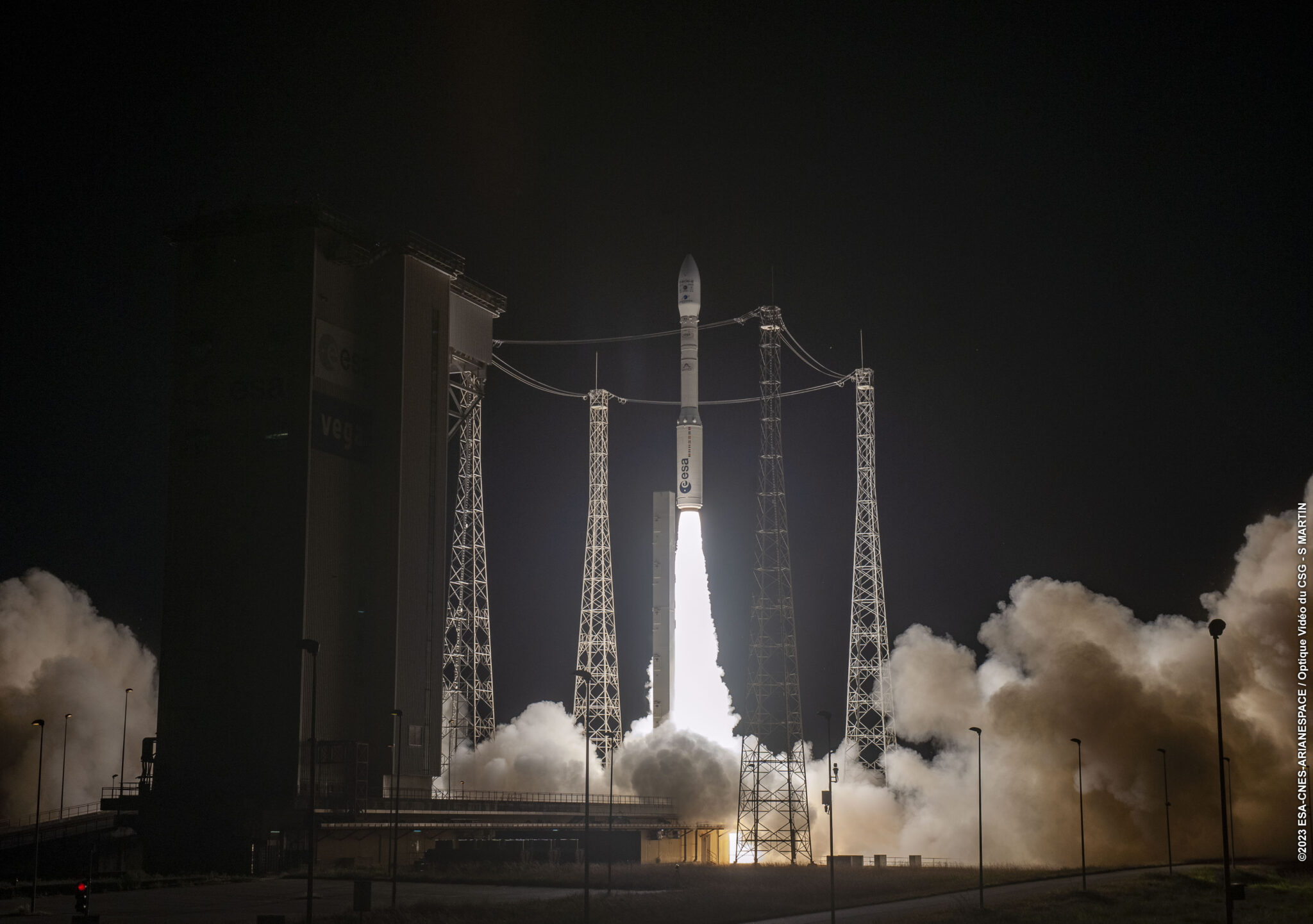Delayed by a few days because of a technical issue, the Vega 1 rocket was finally, and successfully, launched on flight VV23 at 0136 GMT on 9 October from Centre Spatial Guyanais in Kourou, French Guiana.
Aboard was the 450 kg Airbus DS-built THEOS-2, an Earth Observation System 2 with a 0.50 m resolution for Thailand’s GISTDA – GEO-Informatics & Space Technology Development Agency. The other main satellite payload was the 280 kg NSPO-built Triton spacecraft (aka Formosat-7R) spacecraft for the Taiwan Space Agency (TASA), which is an in-orbit spare for the Formosat 3/Cosmic constellation.

Vega 1 launch on flight VV23. Courtesy: Arianespace
In addition to the two main satellite payloads, the Vega flight also carried ten cubesat-class satellites:
- CSC-1 and -2, a pair of 6U-cubesat technology test spacecraft for ISISpace – Innovative Solutions in Space
- ANSER L, ANSER F1 and ANSER F2, water contamination monitoring 3U Cubesats for Spain’s INTA (Instituto Nacional De Tecnica Aerospacial), using ‘airflow’ deflection flaps for orbit manoeuvre
- PRETTY (Passive REflecTomeTry and dosimetry), a 3U Cubesat launched for ESA and built by TU Graz
- MACSAT for OQ Tech of Luxembourg, a narrowband Internet-of-Things communications 6U-Cubesat
- PROBA V-CC (aka PVCC), a remote sensing/vegetation monitoring 6U-Cubesat for ESA
- N3SS for the French space agency CNES, a 3U-Cubesat examining civilian signals intelligence/spectrum use
- ESTCube-2 for Tartu University (Estonia), a 3U-Cubesat to test an electric solar braking sail
The positioning and deployment sequence involved five AVUM upper stage burns. After the second burn, the main payloads, THEOS-2 (Thailand GISTDA) and Formosat-7R (Taiwan TASA), were released in their planned 600 km near polar Sun-synchronous orbit. The first release of the cubesats were of PVCC, CSC-1 and ANSER-F2, followed by three further releases of the other spacecraft.
Update on 16 October: Two spacecraft, ANSER-L and ESTCube-2, failed to separate.








